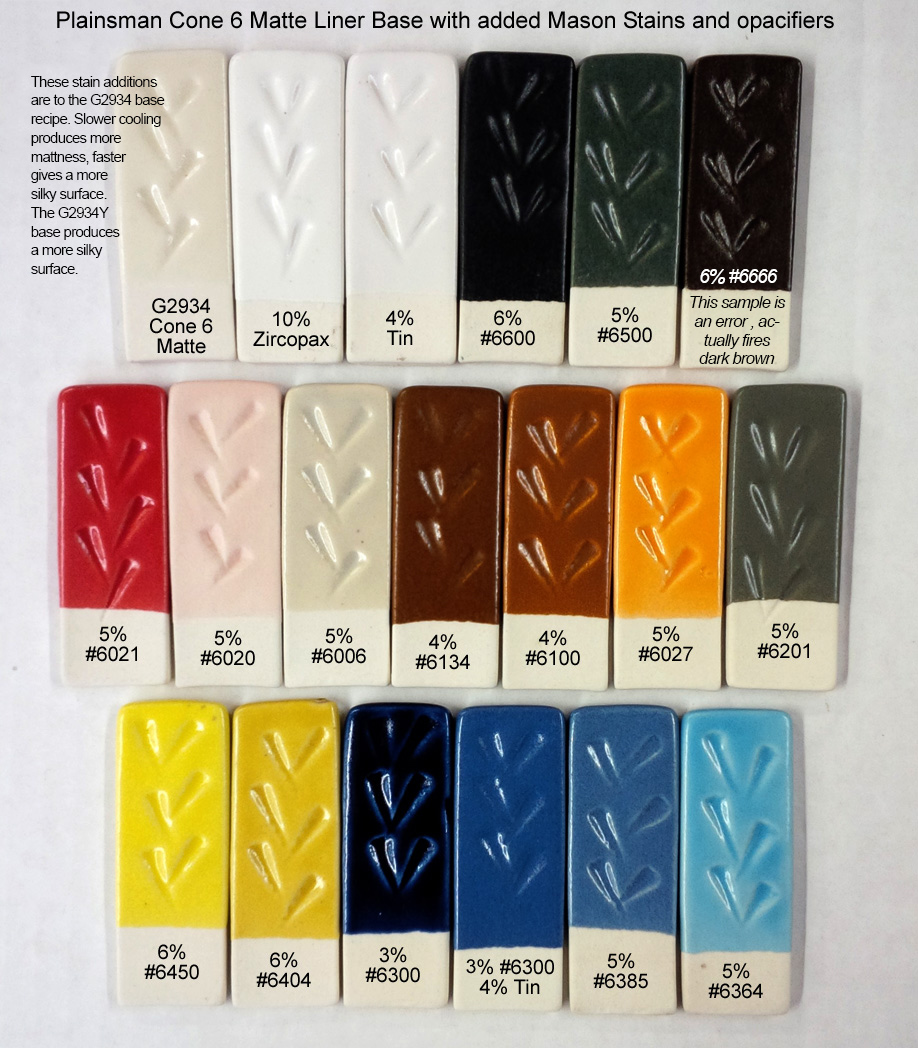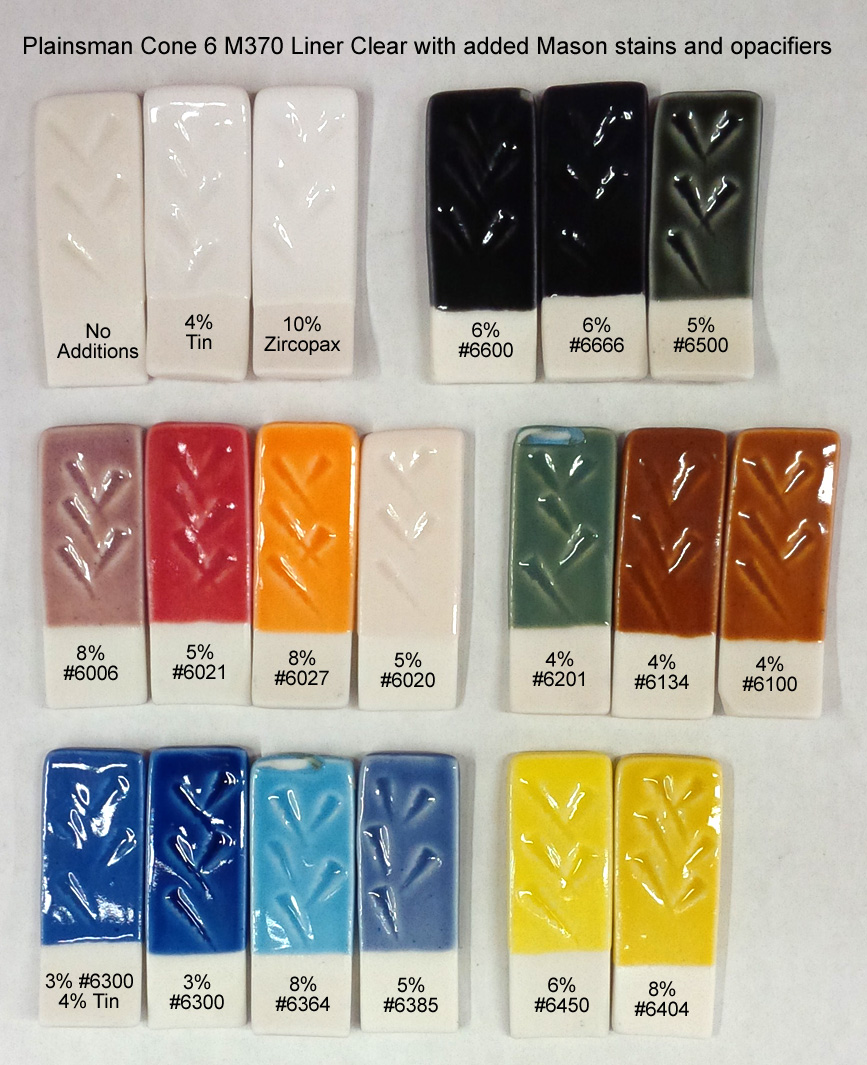| Monthly Tech-Tip | No tracking! No ads! |
Cone 6
Also called "middle temperature" by potters, cone 6 (~2200F/1200C) refers to the temperature at which most hobby and pottery stonewares and porcelains are fired.
Key phrases linking here: cone 6, 2200f - Learn more
Details
This refers to the medium temperature oxidation range (or middle fire) that most potters work in using electric kilns. Orton cone 6 fires to about 2200F (or 1200C). Potters who fire ware cone 5 or 7 may also consider themselves to be working at "cone 6" (using the term to designate the range or type of ware). This range represents the best investigated and experimented glazes among potters and hobbyists, there are millions of images on line of ware being made and commercial products that support it.
Photo not found
or not published
Cone 6 is the lowest practical range for feldspar-fluxed white plastic bodies. Vitreous porcelains can be made with up to 30% feldspar (the remainder being silica, 20-25% is needed to prevent crazing, and kaolin/ball clay). White stonewares need about 20-25% feldspar. Typically a bentonite addition is needed to augment plasticity. Buff and brown burning bodies offer more flexibility since they often employ clays that already contain natural quartz and fluxing minerals (so less feldspar powder is needed).
Clays made using feldspar can be made to vitrify to zero-porosity density at cone 6 (including porcelains and stonewares). Since vitreous ware can be made at cone 6, many do not bother with the extra time, trouble and expense of firing to higher temperatures. Companies making prepared glazes serve the middle temperature range with a wide array of products.
Related Information
Mason stains in the G2934 matte base glaze at cone 6

This picture has its own page with more detail, click here to see it.
Stains can work surprisingly well in matte base glazes like the DIY G2934 recipe. The glass is less transparent and so varying thicknesses do not produce as much variation in tint as glossy bases do. Notice how low many of the stain percentages are here, yet most of the colors are bright. We tested 6600, 6350, 6300, 6021 and 6404 overnight in lemon juice, they all passed leach-free. The 6385 is an error, it should be purple (that being said, do not use it, it is ugly in this base). And chrome-tin pink and maroon stains do not develop the color (e.g. 6006). But our G1214Z1 CaO-matte comes to the rescue, it both works better with some stains and has a more crystal matte surface. The degree-of-matteness of both can be tuned by cooling speed and blending in some G2926B glossy base. You can mix any of these into brushing or dipping glazes.
Mason stains in the G2926B base glaze at cone 6

This picture has its own page with more detail, click here to see it.
This glaze, G2926B, is our main glossy base recipe. Stains are a much better choice for coloring it than raw metal oxides. Other than the great colors they produce here, there are a number of things worth noticing. Stains are potent; the percentages needed are normally much less than for metal oxides. Staining a transparent glaze produces a transparent color, it is more intense where the laydown is thicker - this is often desirable in highlighting contours and designs. For pastel shades, add an opacifier (e.g. 5-10% Zircopax, more stain might be needed to maintain the color intensity). The chrome-tin maroon 6006 does not develop well in this base (alternatives are G2916F or G1214M). The 6020 manganese alumina pink is also not developing here (it is a body stain). Caution is required with inclusion stains (like #6021). Bubbling, as is happening here, is common - this can be mitigated by adding 1-2% Zircopax. And it’s easy to turn any of these into brushing or dipping glazes.
Links
| Glossary |
Medium Temperature
These are stoneware glazes that fire in the range of 1200C (2200F). They often contain boron to assist with melting. |
| Glossary |
Low Temperature Glaze
In ceramics, glazes are loosely classified as low, medium and high temperature. Low temperature is in the cone 06-2 range (about 1800F-2000F). |
| Glossary |
Cone 5
Also called "middle temperature" by potters, cone 5 (~2160F/1180C) refers to the low end of the temperature range at which most hobby and pottery stonewares and porcelains are fired. |
| Articles |
Glaze Recipes: Formulate and Make Your Own Instead
The only way you will ever get the glaze you really need is to formulate your own. The longer you stay on the glaze recipe treadmill the more time you waste. |
| Articles |
Electric Hobby Kilns: What You Need to Know
Electric hobby kilns are certainly not up to the quality and capability of small industrial electric kilns, being aware of the limitations and keeping them in good repair is very important. |
| Recipes |
G2926B - Cone 6 Whiteware/Porcelain transparent glaze
A base transparent glaze recipe created by Tony Hansen, it fires high gloss and ultra clear with low melt mobility. |
| Recipes |
G2934 - Matte Glaze Base for Cone 6
A base MgO matte glaze recipe fires to a hard utilitarian surface and has very good working properties. Blend in the glossy if it is too matte. |
| Recipes |
G2934Y - Cone 6 Magnesia Matte Low LOI Version
The same chemistry as the widely used G2934 but the MgO is sourced from a frit and talc instead of dolomite. It has a finer surface, less cutlery marking and staining. |
| By Tony Hansen Follow me on        |  |
Got a Question?
Buy me a coffee and we can talk

https://backup.digitalfire.com, All Rights Reserved
Privacy Policy
